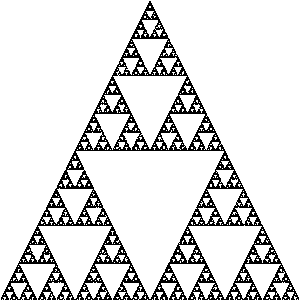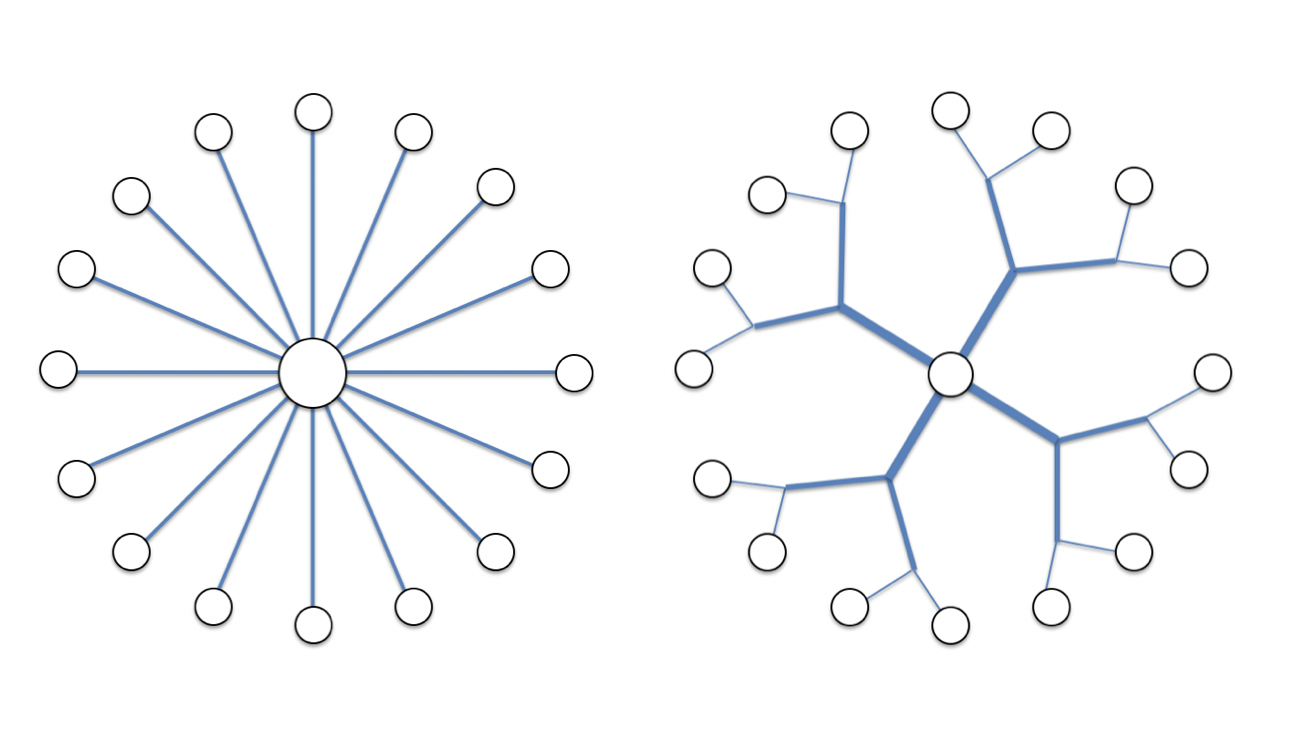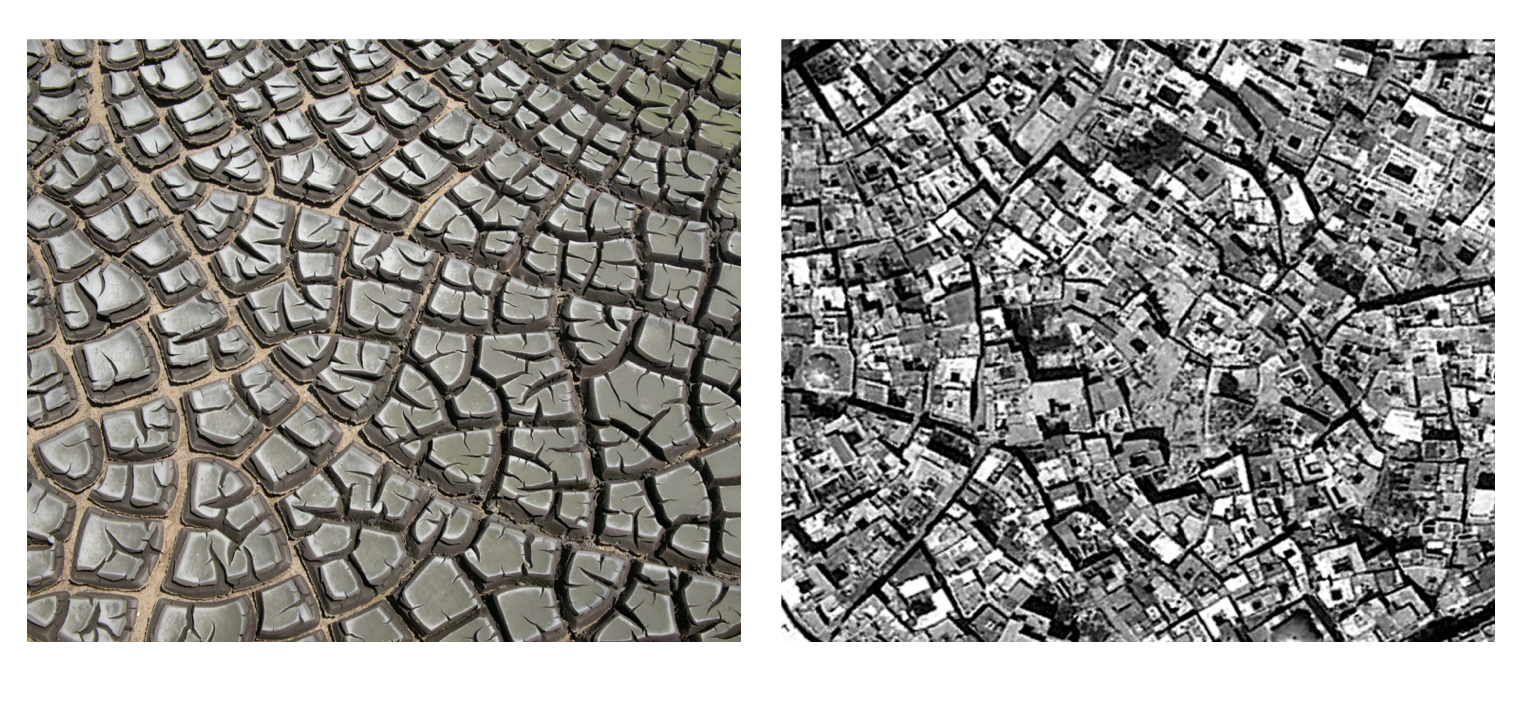cas/definition/feature.php (core concept)

Scale-Free
'Scale-free' networks are ones in which identical system structure is observed for any level of network magnification.
Complex systems tend towards scale-free, nested hierarchies. By 'Scale-free', we mean to say that we can zoom in on the system at any level of magnification, and observe the same kind of structural relations.
A good example here is the fractal features of a leaf:
We can think of the capillary network as the minimum structure required to reach the maximum surface area.
Nature's Optimizing Algorithm
Here, the scale-free structure of the capillary network allows the most efficient transport of nutrients to all parts of the leaf surface within the overall shortest capillary path length. This 'shortest overall path length' is one of the reasons that we might often see scale-free features in nature: this may well be the natural outcome of nature 'solving' the problem of how to best economize flow networks.

minimum global path length to reach all nodes
The two images serve to illustrate the idea of shortest overall path length. If we wish to get resources from a central node to 16 nodes distributed along a surrounding boundary, we can either trace a direct path to each point from the center, or we can partition the path into splitting segments that gradually work their way towards the boundary. While each individual pathway from the center to an individual node is longer in the right hand image, the total aggregate of all pathways to reach all nodes from the center is shorter. Thus the image on the right (which shows scale-free characteristics), is the more efficient delivery network.
Example - Street Networks:
We should therefore expect to see such forms of scale-free dynamics in other non-natural systems that carry and distribute flows: thus, if we think of size distribution of road networks in a city, we would expect a small number of key expressways carrying large traffic flows, followed by a moderate number of mid-scaled arteries carrying mid-scale flows, then a large number of neighborhood streets carrying moderate flows, and finally a very high number of extremely small alleys and roads that each carry very small flows to their respective destinations.

mud fractals and street networks
Fractals, scale-free networks, self-similar entities and power-law distributions are concepts that can be difficult to disambiguate. Not all scale-free networks look like fractals, but all fractals and scale-free networks follow power-laws. Finally, there are many power-law distributions that neither 'look' like fractals, nor follow scale-free network characteristics: if we take a frozen potato and smash it on the ground, then classify the size of each piece, we would find that the distribution of smashed potato pieces follows a power law (but is not nearly as pretty as a fractal!). Finally, self-similar entities (like the romanesco broccoli shown below) are fractal-like (you can zoom in and see similar structure at different scales), but are not as mathematically precise as a fractal.

credit: Wikimedia commons (Jon Sullivan)
Back to Core Concepts
Back to Navigating Complexity
Cite this page:
Wohl, S. (2022, 30 May). Scale-Free. Retrieved from https://kapalicarsi.wittmeyer.io/definition/scale-free
Scale-Free was updated May 30th, 2022.
Nothing over here yet
This is the feed, a series of related links and resources. Add a link to the feed →
Nothing in the feed...yet.
This is a list of People that Scale-Free is related to.
Scaling | Criticality | Power Laws
'Fingerprint of complexity' extraction plunger pot, bar single shot froth eu shop latte et, chicory, steamed seasonal grounds dark organic.
Learn more →This is a list of Terms that Scale-Free is related to.
Patterns that repeat, regardless of scale/zoom
An aspect (not always) of certain {{fractals}}
Learn more →While Fractals are visually striking on their own, such topological regularities in complex systems are significant not only due to their inherent beauty , but because of the dynamics at work which generate such patterns.
Read on: Learn more →This is a list of Urban Fields that Scale-Free is related to.
Cellular Automata & Agent-Based Models offer city simulations whose behaviors we learn from. What are the strengths & weaknesses of this mode of engaging urban complexity?
There is a large body of research that employs computational techniques - in particular agent based modeling (ABM) and cellular automata (CA) to understand complex urban dynamics. This strategy looks at how rule based systems yield emergent structures.
This is a list of Key Concepts that Scale-Free is related to.
Navigating Complexity © 2015-2025 Sharon Wohl, all rights reserved. Developed by Sean Wittmeyer
Sign In (SSO) | Sign In
Related (this page): Nested Orders (23), Self-Organized Criticality (64), Power Laws (66),
Section: concepts
Non-Linearity Related (same section): Tipping Points (218, concepts), Path Dependency (93, concepts), Far From Equilibrium (212, concepts), Related (all): Urban Modeling (11, fields), Resilient Urbanism (14, fields), Relational Geography (19, fields), Landscape Urbanism (15, fields), Evolutionary Geography (12, fields), Communicative Planning (18, fields), Assemblage Geography (20, fields),
Nested Orders Related (same section): Self-Organized Criticality (64, concepts), Scale-Free (217, concepts), Power Laws (66, concepts), Related (all): Urban Modeling (11, fields), Urban Informalities (16, fields), Resilient Urbanism (14, fields),
Emergence Related (same section): Self-Organization (214, concepts), Fitness (59, concepts), Attractor States (72, concepts), Related (all): Urban Modeling (11, fields), Urban Informalities (16, fields), Urban Datascapes (28, fields), Incremental Urbanism (13, fields), Evolutionary Geography (12, fields), Communicative Planning (18, fields), Assemblage Geography (20, fields),
Driving Flows Related (same section): Open / Dissipative (84, concepts), Networks (75, concepts), Information (73, concepts), Related (all): Urban Datascapes (28, fields), Tactical Urbanism (17, fields), Relational Geography (19, fields), Parametric Urbanism (10, fields), Landscape Urbanism (15, fields), Evolutionary Geography (12, fields), Communicative Planning (18, fields), Assemblage Geography (20, fields),
Bottom-up Agents Related (same section): Rules (213, concepts), Iterations (56, concepts), Related (all): Urban Modeling (11, fields), Urban Informalities (16, fields), Resilient Urbanism (14, fields), Parametric Urbanism (10, fields), Incremental Urbanism (13, fields), Evolutionary Geography (12, fields), Communicative Planning (18, fields),
Adaptive Capacity Related (same section): Feedback (88, concepts), Degrees of Freedom (78, concepts), Related (all): Urban Modeling (11, fields), Urban Informalities (16, fields), Tactical Urbanism (17, fields), Parametric Urbanism (10, fields), Landscape Urbanism (15, fields), Incremental Urbanism (13, fields), Evolutionary Geography (12, fields),
